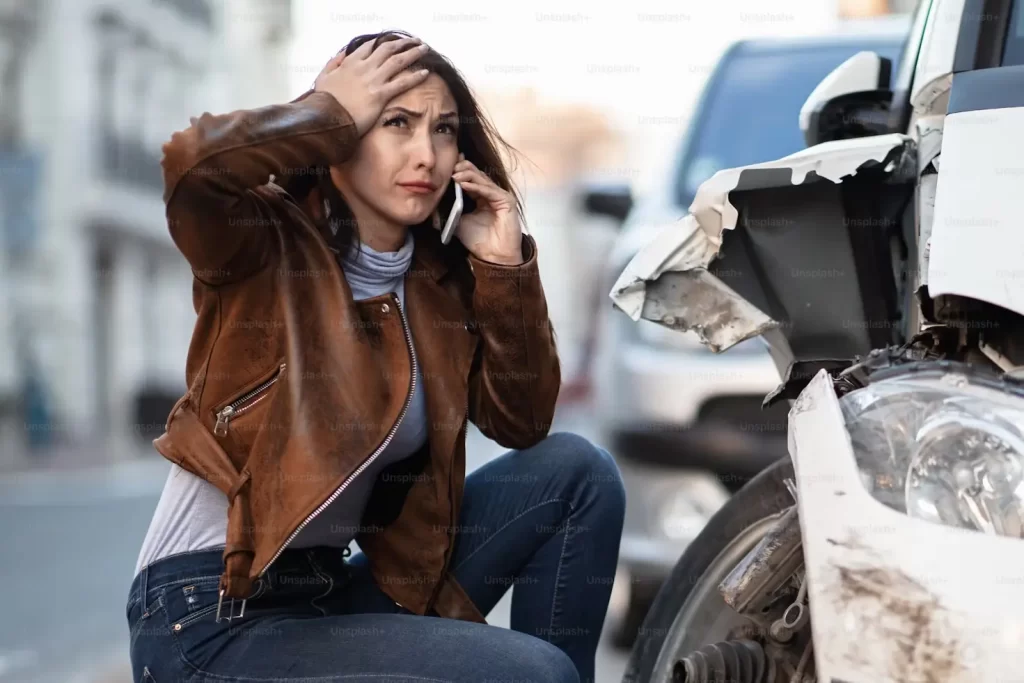Whenever the cars collide, the experience is always unpleasant, however, some auto accidents are severe and calamitous, especially the T bone accidents. These accident are also referred to as T-bone accident because of the likeness of ‘T’ when the front part of one car hits the side of the other car and the impact can change lives. This blog post seeks to provide better understanding of t bone accident bringing out causes effects and legal processes that are followed.
This guide targets anyone, whether you are an injured victim in a car accident who is trying to understand legal procedures or a lawyer who wants to help your clients understand what they should do. You should expect to get knowledge on how faults are determined, what injuries are likely to happen and stages to take when one wants to lay a claim.
What Is a T Bone Accident
A T bone accident otherwise referred to as broadside collision is a road accident that happens when the front part of one vehicle hits the side of another. Such a crash can result from one driver’s failure to give way at an intersection or the occurrence of a rampering red light. The problem with side-impact collisions is that the side of a car poses relatively little protection for the car’s passengers compared to the rear and front, so these collisions are especially risky.
How do T-bone Accidents Occur
These are also Fourth Appeals common in cross roads but can also occur in parking lots and highways. Many recent often involve driving while distracted, speeding, running stop signs or stop lights. Light conditions such as poor day light or night fog can also affect the occurrence of an accident.
The processes involved in T bone accidents will always see one car either gaining velocity or losing it, often with another car travelling in a perpendicular direction. Such a variation in the motion can produce large force upon striking, thus inflicting immense harm and worker casualties.
The Worst of T Bone Accidents
T-bone accidents are the reason for a high number of motor vehicle related deaths and injury. The Insurance Institute for Highway Safety (IIHS) has been defining side impact crashes, including T bone car accidents as crashes that happen. accounted for 23 percent of the annual death toll of occupants in crashed vehicles in the year 2020. This statistic means that many of such collisions are severe, and can even be fatal in some cases.
As we have seen earlier, victims of T bone accidents can experience anything from a few injuries to fatal injuries. Some of the most common injuries include:
Symptoms Of T Bone Accidents
Surveillance Footage: Density of traffic light cameras and nearby businesses may have been recorded and provide clarification of how the accident occurred.
Role of Police Reports
Many times the police reports are also used to decide who is at fault.
Head and Brain Injuries: Crashing into the side of a car has now been known to cause severe trauma to the brain, due to lack of protecting barrier to take the impact.
Spinal Cord Injuries: The impact during the accident can cause damage that might be fatal to the spine which results in paralysis.
Broken Bones: The arms or the legs and the ribs are more susceptible to T-bone crash because they are closer to the area of contact.
An Analysis of the Effects of Injuries in the Long Run
While experiencing a simple T-bone accident is sometimes not more than a brush with death, the consequences of this accident are not only very severe but also vary in degree. It is possible to have long-term medical treatments, rehabilitations, and sometimes disability all through the life. Concerning the psychological impacts of its utilization, the following effects can be named: In addition to anxiety and post-traumatic stress disorder, patients often have similar quality of life.
FINDING LIABILITY IN T BONE COLLISIONS
Determination of who is at fault in T bone accidents is often not very straightforward. As contrast to rear-end collisions where the car that hit the other from behind is at fault, T-bone accidents may take time to diagnose.
The Characteristics that are Evaluated when Arriving at a Fault Decision
Several factors are evaluated to establish fault in T bone accidents:
Traffic Signals and Signs: Whether the drivers involved respected signals and signs at the place of the accident.
Eyewitness Accounts: Eyewitness accounts always prove useful in establishing the cause of any incident since it is apparent from the above consequence. They will record their findings, take statements from witnesses, and gather evidence when police or law enforce officers get to the scene. Pre-suit investigation usually comprises of this report which may contain the officer’s observations and findings on fault.
T Bone Accident Legal Rights and Options

Every car accident victim should acquaint himself with all legal aspects surrounding the car accident including the T bone accident. A victim also has several ways through which he can seek for damages for his loss which can include; medical bills, wages lost and any damages that the trauma has cost him.
Filing an Insurance Claim
The first thing the victim may do for many of the cases is to report the accident to the other driver’s insurance carrier. This amounts to proving that an accident occurred; producing bills on medical expenses, and estimates to cost of the damages.
A guide for filing an insurance claim
• Document Everything: It is also important you maintain clear and accurate records of all medical treatments, costs incurred, and all talk with insurance related people.
• Be Cautious with Statements: Do not say anything to insurance adjusters without thinking about it. They may twist and turn your statements in a bid to reduce the amount that you are owed.
• Consider Legal Representation: It remains pivotal to seek the services of an attorney in regard to dealing with insurance claims since they are complicated and the clients’ rights are often violated.
Filing a personal injury lawsuit
In case you still have outstanding loss not covered by the insurance compensation, you may think of a personal injury claim. This legal action can help seek other damages for general damages, which are not easily quantifiable monetarily such as pain and suffering.
Steps in Filing a Lawsuit
- Consult an Attorney: Get a legal consultation session to discuss whether or not you have grounds to go forward with your case.
- File the Complaint: Your attorney will prepare and submit a pleading labelled a complaint stating your grievances against the defendant.
- Discovery Phase: Both sides obtain discovery, it may comprise of depositions, interrogatories, and also document requests.
The Role of Legal Professionals
Counsel lawyers who major on car accident cases are important to enable the victims to overcome the legal procedures that exist after T-bone accident. They provide professional experience in investigation, compromising and trial of their clients’ cases.
Why hire a car accident lawyer
Hiring a car accident lawyer offers several advantages:
Headaches: May indicate concussion or another kind of the head trauma.
Numbness or Tingling: Severe damage to nerves or spinal cord might also be caused.
Expertise in Law: Personal injury lawyers know when you are entitled to a reward and also how to assemble a compelling case.
Negotiation Skills: It can get a coverage agency to work for fair compensation for the injured parties.
Court Representation: If need be, a lawyer can stand for you in court to defend your interest.
Choosing the Right Lawyer
It is therefore important that you choose the best lawyer if your case is to be successful. Choose lawyers that have handled car accident cases before, those who have handled similar cases successfully and those who are recommended by past happy clients.
Preventing T-Bone Accidents
Even if not all T bone accidents can be avoided, motorists can exercise proper behaviors behind the wheel in order to avoid such types of collisions.
Preventing T-Bone Car Accidents
Obey Traffic Signals: Preserve traffic lights and stop signs, crossing and intersections should also be taken with a great care.
Stay Alert: Influence avoidance such as texting while driving and others should be eliminated so that the driver’s attention is focused on the road.
Use Defensive Driving: There are safety issues that we can foresee in terms of the environment, things and people that surround them and which one has to be ready for an instant response.
Use of Vehicle Safety Devices

Safety features which are fitted in today’s cars are aimed at reducing the effects of T-bone accidents. The major safety features such as side air bags, crumple zones, and the systems of electronic stability control can raise the level of occupant protection in the case of an accident.
Concerning Plan Implementation To what extent is timely medical attention important for patients?
In any case of a T-bone auto accident, it is important that one should look for further medical help regardless of the fact of feeling no pain at all. Some kinds of injuries may be hidden and, therefore, will not be visible for several days, but they can result in severe outcomes if appropriate treatment is not applied.
Common Delayed Symptoms
Some symptoms may appear hours or days after the accident, including:
Neck and Back Pain: Well as indicative of whiplash or spinal injuries well as indicative of whiplash or spinal injuries. Containment and Management of Persons with Lymphatic Filariasis
Most of the time, a victim of a T-bone accident requires continuing medical attention and physical therapy to regain his or her strength and mobility. If possible, they should consult a physical therapist, chiropractor or a psychologists to help them with recovery.
Economic Consequences of T-Bone Accidents
T-bone accident is very devastating, not to mention the financial hit that the victims receive because of the same. C …
Property Damage: Expenditure related to repair or replacement of your car or other vehicles in your possession.
Non-Economic Damages
Special damages cover losses which are not financial; these include: pain and suffering, emotional trauma, and loss of quality of life. Unlike special damages, these damages are more difficult to prove but they are as essential in a personal injury case as any.
Seeking Support and Resources
There is a broad variety of resources available to help victims with the management of comprehending the consequences of a T-bone accident.
Support Groups
Support group of accident victims is useful for emotional support purposes and useful tips from others who were through the same ordeal. These groups provide a belongingness and a common calibration.
Legal Resources
A lot of bodies provide the services and information regarding accident compensation to the victims without charge. These services can support you on what you are allowed to do or not to do without charging you initial costs of a lawyer.
T-bone accidents are some of the worst kinds of car accidents in the world due to the massive physical, psychological, and financial impacts. This knowledge may help victims along with their families be prepared with the legal situations, and the ways to avoid such phenomenon.
In the case of T-bone car accidents consulting a physician immediately, and seeking the service of an attorney are recommended.
Moreover, hazardous by-products of petroleum may cause serious medical bills, expensive repairs on vehicles, and lost income, especially when employees.
Calculating Economic Damages
Economic losses relate to defined monetary losses that would be incurred due to the accident. These may include:
Medical Expenses: Accident and emergency treatments, operations, prescriptions, and continuous treatments.
Lost Wages: Loss of earnings because of inability to work when in hospital or receiving treatment.

